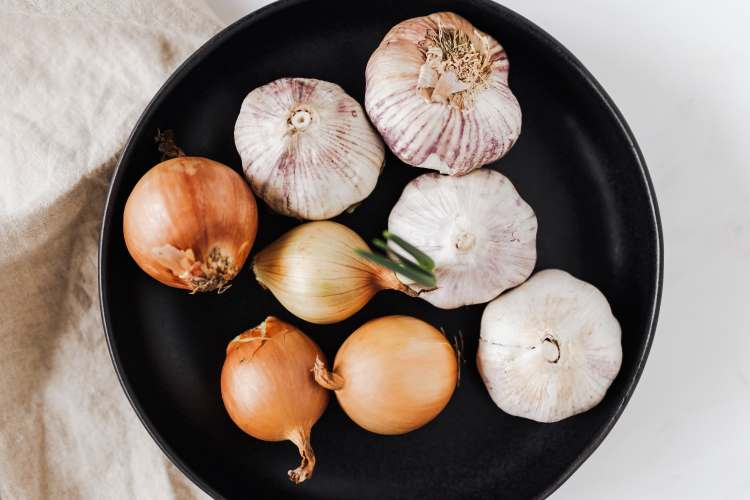
Onion export ban: In a strategic move to curb inflation ahead of the 2024 Lok Sabha elections, the Union government has clamped down on onion exports, changing the export policy from ‘free’ to ‘prohibited’ till March 2024. This step, announced by the Director General of Foreign Trade, seeks to stabilise domestic prices which have nearly doubled in a year, leaving a significant impact on households across the nation. This policy change follows an earlier intervention where a 40% export duty was imposed, and a minimum export price of $800 per metric tonne was set to control the outflow and maintain domestic supply.
The crux of the matter lies in the 97.95% increase in the all-India daily average price of onions, a crucial kitchen staple for Indian households. Despite India’s status as the world’s second-largest onion producer, the prices have skyrocketed, defying the expectations set by abundant production. This paradoxical situation is a result of several intertwined factors, including climatic challenges, policy decisions, and market dynamics.
The recent price surge can be attributed to severe weather conditions, including heavy rainfall and hailstorms in major producing states like Maharashtra. These extreme weather events have wreaked havoc on the onion crops, covering an estimated 50,000 hectares. The timing of these events is critical as it coincides with the kharif crop season, which, unlike the rabi crop, is not stored due to its high moisture content. Consequently, any disruption in the kharif cycle directly impacts market availability and prices.
READ I RBI opts for continuity in monetary policy amid uncertainty
Onion export ban: A balancing act
The government’s response to this crisis has been multi-pronged. From imposing export duties and setting minimum export prices to releasing onions from the buffer stock at subsidised rates, the efforts have been directed towards stabilising prices and ensuring affordability for the average consumer. However, these measures have had a mixed impact. While they have provided temporary relief, the underlying issues of under-invoicing in exports and the delay in the arrival of the kharif crop continue to challenge these interventions.
Production of onions across India (million metric tonnes)

Onion prices are not just a matter of household budget but also a significant contributor to food inflation in India. With a 0.64% weight in the retail inflation basket, any fluctuation in onion prices has a disproportionate impact on overall inflation. This is particularly crucial in a country where food inflation can trigger widespread socio-economic repercussions.
While the government’s measures to restrict exports aim at bolstering domestic supply, they also raise questions about India’s position in the global market. As a major exporter of onions, especially to countries like Bangladesh, Malaysia, and the UAE, these restrictions have international implications. The challenge for policymakers is to strike a balance between domestic needs and international commitments.
While the government’s intention to curb inflation and stabilise domestic prices is understandable, the export ban raises concerns about its impact on farmers and consumers. On one hand, farmers who were expecting higher income from exports may face financial difficulties due to the sudden shift in policy. On the other hand, consumers in onion-importing countries, particularly those with lower incomes, are likely to face higher prices and potential shortages. This raises questions about the fairness and sustainability of this policy in the long term.
The export ban offers a temporary solution to the problem of fluctuating onion prices. To achieve long-term stability, the government needs to address the underlying issues causing price hikes. These include:
Improving agricultural practices: Promoting efficient water management, sustainable farming techniques, and crop diversification can help mitigate the impact of climate change and ensure stable output.
Investing in infrastructure: Modernising storage facilities and transportation networks can reduce post-harvest losses and improve supply chain efficiency, leading to more stable prices.
Promoting market transparency: Tackling the issue of under-invoicing and ensuring fair market practices can prevent manipulation and ensure accurate price information.
Exploring alternative solutions
Instead of bans, the government could explore alternative solutions to regulate onion exports while ensuring domestic supply. These include:
- Implementing a quota system would allow a certain amount of onions to be exported while setting limits to prevent shortages in the domestic market.
- Dynamically adjusting export tariffs could deter excessive exports while allowing them to continue in a controlled manner.
- Increasing awareness about the nutritional benefits of onions and encouraging diverse culinary uses can lead to increased consumption, reducing the reliance on exports.
The onion price conundrum in India calls for a more sustainable and holistic approach. This involves not only immediate policy responses but also long-term strategies addressing agricultural practices, storage infrastructure, and market reforms to buffer against climatic shocks and market fluctuations. The government must tread with a vision that covers both immediate relief and future resilience.

